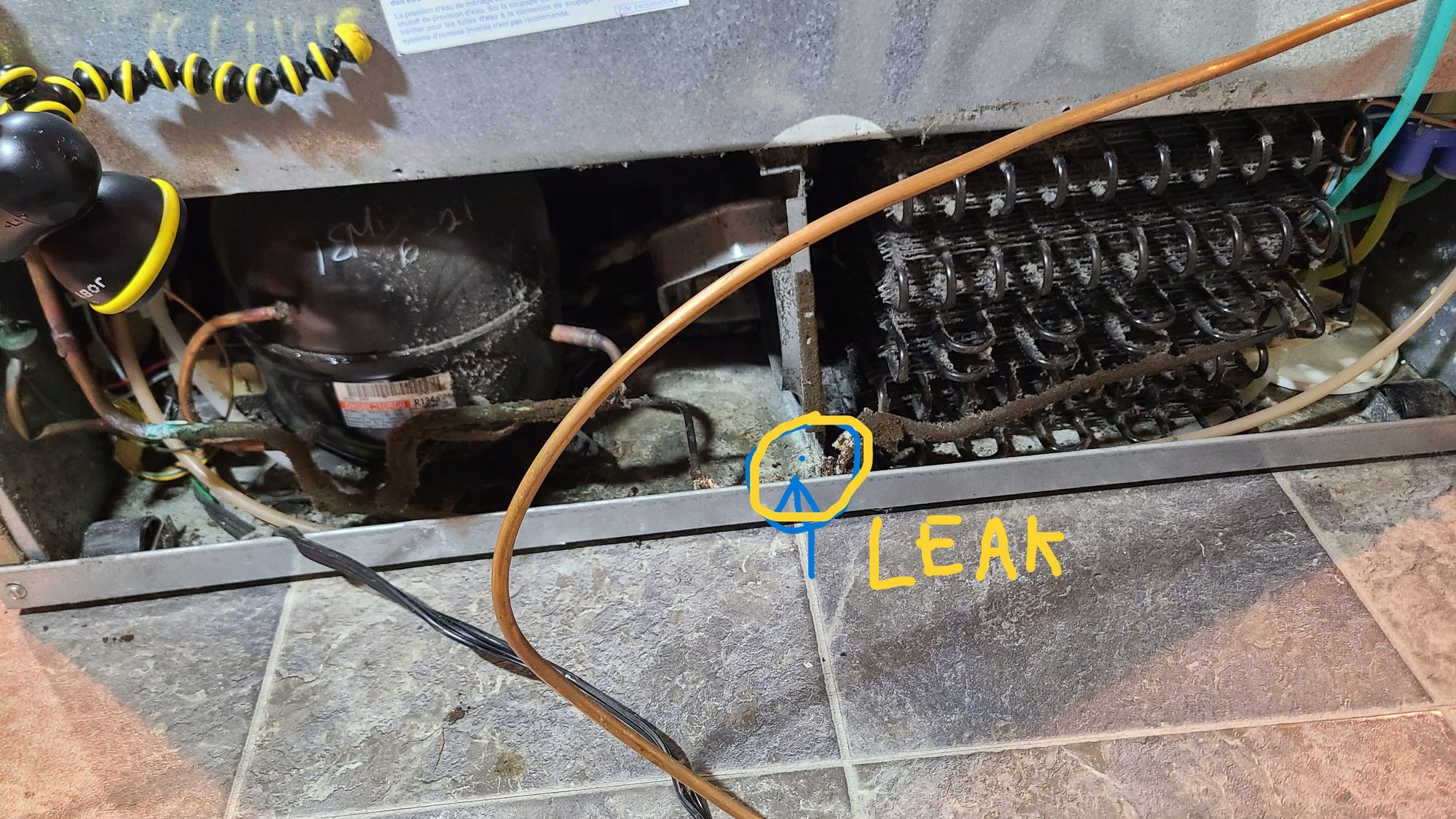Frigidaire Ice Maker Not Working: Quick Fix Guide
This post contains affiliate links. As an Amazon Associate, we earn from qualifying purchases.
Your Frigidaire ice maker was humming along yesterday, but this morning the bin’s completely empty. That familiar clunk-clunk of new ice cubes dropping into the bin? Gone. Before you panic about expensive service calls, know this: 80% of Frigidaire ice maker failures stem from three solvable issues—power glitches, water flow problems, or temperature fluctuations. This guide cuts through the confusion with factory-approved fixes you can implement in under 30 minutes. By the end, you’ll diagnose the exact failure point and restore ice production without professional help.
Why Your Frigidaire Ice Maker LED Is Dark
A dark LED indicator is your first critical clue. Unlike generic appliances, all Frigidaire ice makers ship with factory-activated LED lights that illuminate when operational. If it’s off, the unit isn’t receiving power—not necessarily a component failure. This happens frequently when the control arm gets bumped during routine cleaning or bin removal.
Execute this 5-minute reset sequence:
1. Slide a towel under the ice maker to catch residual water
2. Flip the ice maker switch OFF and wait 5 full seconds
3. Turn it back ON while holding the reset button for 5 seconds
4. Cycle the feeler arm up and down 3–5 times rapidly
Listen for the distinct whir-click of the manual harvest cycle followed by water filling the mold. If you hear neither sound, move to electrical diagnostics. Never skip the arm cycling step—this tricks the unit into test mode, bypassing sensor errors that block production.
Verify Feeler Arm Movement Freedom
The control arm must swing freely within its housing. Ice jams or misaligned bins commonly trap this arm in the “full” position, halting production instantly. Check for frost buildup along the arm track—a 1/8″ ice layer here is enough to jam movement. Use a plastic utensil (never metal) to gently break ice obstructions. If the arm feels stiff when moved manually, apply food-safe silicone lubricant to the pivot point.
How to Fix Low Water Pressure in Frigidaire Models

Your Frigidaire requires 40–120 PSI water pressure—less than this causes hollow cubes or complete production stoppage. Start at the source: locate where the water line connects to your home’s supply valve (usually under the sink). Inspect for three critical failures:
– Plastic tubing kinked at a 90-degree angle
– Saddle valve not fully opened (turn counterclockwise until solid stop)
– Leaks at connection points soaking cabinet flooring
Test and Clean the Clogged Inlet Valve Screen
The inlet valve’s mesh screen traps sediment that starves the ice maker. Follow this safe cleaning protocol:
1. Unplug refrigerator and shut off water supply
2. Remove rear access panel to expose valve
3. Disconnect water line and unscrew valve housing
4. Rinse the brass screen under warm running water
5. Reassemble and test water flow before restoring power
Diagnose valve failure with a multimeter: Set to Rx1, touch probes to terminals. A reading below 200 ohms or above 500 ohms means immediate replacement. Warning: Self-piercing saddle valves (common in older homes) clog 3x faster than full-bore valves—replace if pressure remains low after cleaning.
Why Your Freezer Temperature Stops Ice Production

Frigidaire ice makers halt production when freezer temps exceed 10°F—a critical threshold most users miss. Place an appliance thermometer in the center of your freezer (not the door). If it reads above 0°F, adjust the thermostat to -2°F for 24 hours. Summer groundwater exacerbates this: warmer incoming water reduces freezing efficiency. Temporarily set your freezer to -5°F during heatwaves until production stabilizes.
Seal Failure Checklist That Causes Frost Buildup
Poor door seals let warm air infiltrate, creating frost that blocks airflow. Test seals in 60 seconds:
– Close door on a dollar bill at multiple points
– If you pull it out easily, the seal has failed
– Clean seals monthly with vinegar-water solution
– Replace if seals feel hard or show visible cracks
Pro Tip: After cleaning seals, rub a thin layer of petroleum jelly on them to maintain flexibility in dry climates.
Clearing Frozen Fill Tubes in 10 Minutes
A blocked fill tube is the #1 cause of “no water” symptoms after power/water checks. Water backs up and freezes at the tube’s entry point above the ice mold. Thaw safely without damaging components:
1. Unplug refrigerator and remove ice bin
2. Locate the fill tube (1/4″ plastic line above the mold)
3. Hold a hair dryer on LOW setting 6 inches from the tube
4. Rotate dryer every 30 seconds until water flows freely
5. Replace the tube if cracked from repeated freezing
Never use sharp tools—puncturing the tube causes leaks requiring full ice maker replacement. If water still won’t flow after thawing, the inlet valve has likely failed (see multimeter test above).
Frigidaire Water Filter Replacement Mistakes

Aftermarket filters restrict flow by 40% compared to OEM Frigidaire filters—directly causing low ice production. Generic brands also void warranties per Frigidaire’s service bulletins. Install filters correctly using this sequence:
1. Twist old filter counterclockwise 1/4 turn (expect water spillage)
2. Pull straight down while bracing the housing
3. Insert new filter and twist clockwise until it clicks
4. Run 2 gallons through the dispenser to purge air pockets
Critical: Set a phone reminder for replacement. Filters lose effectiveness after 6 months regardless of indicator lights. Bad taste after new filter? Flush 3 gallons immediately—carbon residue causes temporary odd flavors.
Deep Cleaning Frigidaire Ice Makers Properly
Dirty components cause 30% of “ice maker stopped working” cases. Buildup on ejection fingers prevents cube release, while mold in bins creates foul odors. Perform this 20-minute cleaning:
– Turn OFF ice maker and unplug refrigerator
– Remove ice bin and wash with warm soapy water
– Wipe mold and ejection fingers with 50/50 vinegar-water
– Soak bin in baking soda solution for odor removal
– Dry all parts completely before reassembly
Never use bleach—it damages plastic components and creates toxic fumes when mixed with vinegar residue. For persistent odors, run the manufacturer’s cleaning cycle using approved tablets.
When Frigidaire Ice Maker Repair Costs Exceed Replacement
Stop troubleshooting if your refrigerator is over 10 years old—repair costs often exceed 50% of a new unit’s value. Replace immediately when you see:
– Compressor clicking followed by silence (nugget ice models)
– Water pooling under the fridge from cracked tubing
– Ice maker producing less than 1/3 bin per day after fixes
Top 2024 Frigidaire models with reliable ice makers:
– 27.8 Cu. Ft. French Door: PureSource Ultra II filtration + external dispenser
– 21.5 Cu. Ft. Gallery Counter-Depth: Quick Ice feature (makes 50% more ice)
– 26.3 Cu. Ft. 4-Door Gallery: Dual ice makers with maximum capacity
Frigidaire Ice Maker Emergency Checklist
Follow these steps in exact order—90% of users fix issues by step 5:
- LED Check: Is the indicator light ON? If dark, reset power.
- 5-Second Reset: Complete the OFF/ON/reset sequence.
- Water Line Inspection: Verify no kinks and valve fully open.
- Filter Swap: Replace if older than 6 months (even if light shows “Good”).
- Freezer Temp: Confirm ≤0°F with appliance thermometer.
- Fill Tube Test: Thaw any ice blockage with hair dryer.
- Seal Inspection: Check for air leaks around door gaskets.
- Valve Multimeter Test: Confirm 200–500 ohms continuity.
- Professional Help: If unresolved, budget $125–$185 for service call.
Pro Tip: Keep a cooler with store-bought ice during troubleshooting—most fixes resolve within 6 hours. If cubes remain small after fixes, increase freezer temp to -5°F for 48 hours to boost production.
Your Frigidaire ice maker should resume normal operation after these targeted interventions. Remember that water supply issues cause 65% of failures—always start your diagnosis there before assuming component failure. For persistent problems, consult Frigidaire’s live chat support with your model number (found inside the fridge door) for model-specific wiring diagrams. Regular filter replacement and annual cleanings prevent 90% of future breakdowns—turn this frustration into a reliable ice production system with minimal maintenance.
